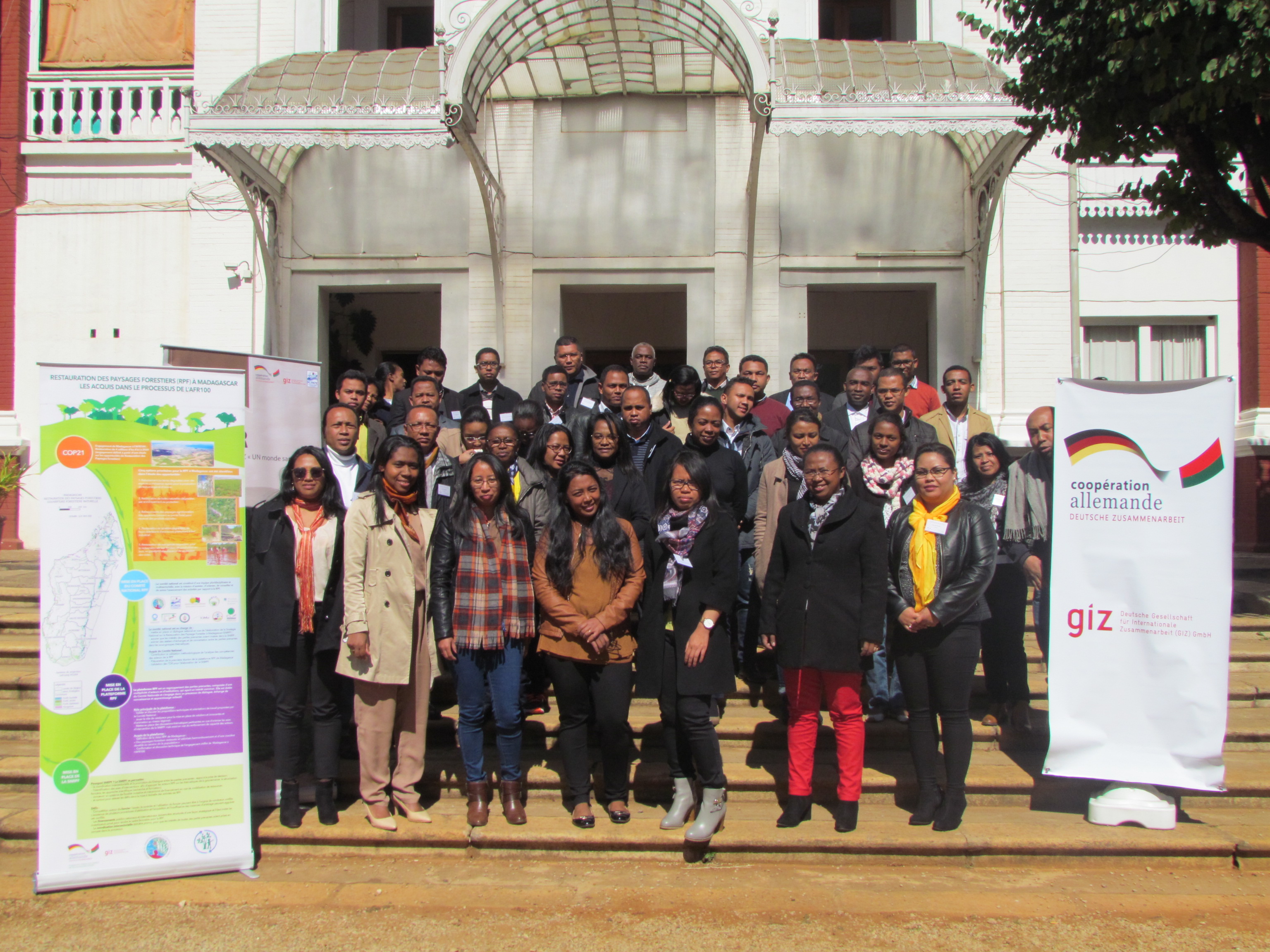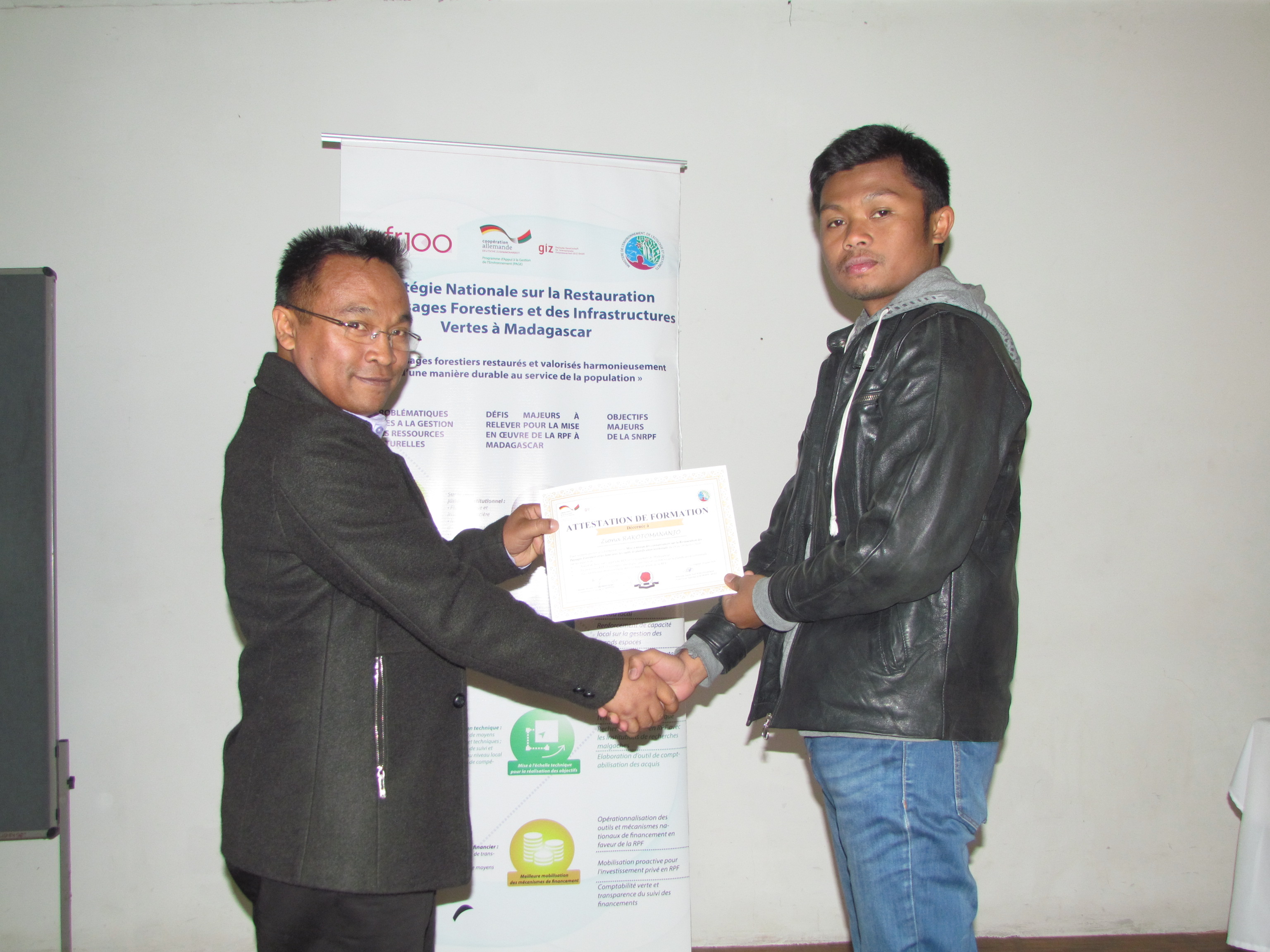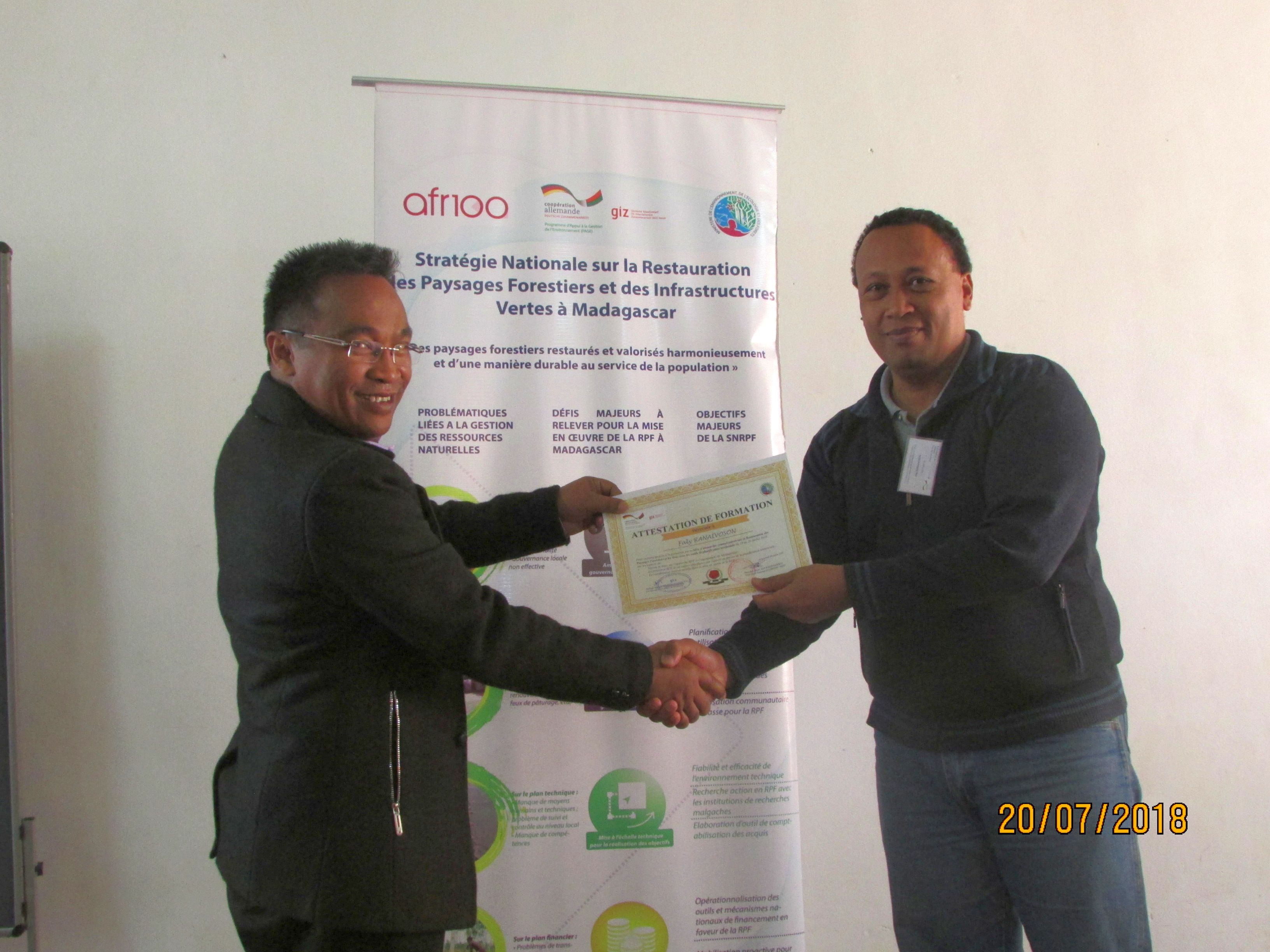



A series of trainings for national decision makers was conducted covering topics such as FLR terms & definitions, strategies addressing drivers of degradation (e.g. wood energy), as well as financing options. Capacity building was conducted continuously and had a ‘training on the job’ character; it was aligned with concrete aspects such as FLR studies (ROAM study, financing options), the national FLR strategy and identification of FLR priority landscapes. ~40 relevant actors (universities, civil society, private sector) were able to provide their input in the form of questionnaires on how to define priority areas for FLR, which was a cornerstone of capacity building.
The training was complemented by the participation of national representatives at various FLR & AFR100 regional and international conferences; this enabled further knowledge exchange at global level to improve national strategies.
At present, capacity building focuses at the regional level; a training module has been developed and tested in Boeny region in April 2018 and will be adapted for application in Diana region. Additional trainings will be held for the Ministry of Spatial Planning, covering land governance.
- An assessment of stakeholders and capacity needs was conducted and completed (06/2016)
- High personal experiences and technical abilities of the RPF National Committee members were great assets for the capacity building. They acted as trainers and external resource persons were not necessary
- High political commitment from partner side
- Support of BIANCO (national independent anti-corruption agency) to improve transparency in the forest sector (until late 2016)
- The trainings and regular exchanges helped to create a common understanding about the FLR concept as a multi-sectoral landscape approach and its practical implementation in Madagascar at policy, strategy and practical level
- It was crucial to increase the knowledge about the RPF approach based on international discussions and local realities. Each actor had own definitions of "landscape"; capacity building on the approach proved essential to ensure the same level of information for all stakeholders, especially those in sectors other than the environment
- The innovative aspect was that members of the National Committee dedicated a lot of time and also actively participated in the development of training modules and capacity building.
- The implementation of capacity building was highly participatory and the content was improved continuously by participants, also adapting the ‘language’ of key sectors such as land use planning and finance